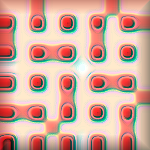Brainsteem Mathematics Challenges - Upside Down Number

The Question
A 4-digit integer is shown on a digital screen. If you turn the screen upside down, the new number is 1716 less.
Find the original number.
This is at the level of a lower secondary national mathematics competition.
Try to share your method so as to help each other learn new techniques and strategies.
Come and check out Brainsteem challenges and other Mathematical posts currently live!
Brainsteem Mathematics Challenges - Digital Sum
Adding LaTeX functionality for inline mathematical and scientific notation
Mathematical Arts - Robert Voorheis, Soft Fractures, Video
Professor Pailyn's Puzzles - Borromean Number Rings
Brainsteem Mathematics Challenges - Brilliant Numbers
Brainsteem Compute #3 Prize Computational Maths Puzzle [Win 40% and 10% in SBD]
Brainsteem #9 Prize Maths Puzzle [Win 40% and 10% in SBD]
Brainsteem Compute #2 Prize Computational Maths Puzzle [Win 40% and 10% in SBD]
Please upvote, resteem and follow @rycharde for more Brainsteems!
And don't forget to upvote each other's comments to bring cheer to the whole community!
I read the question, left the computer to go eat some chicken, and solved it while eating. It took much longer to type this solution up.
We're dealing with digital displays, so the digits 3, 4, and 7 can't be in the answer (they become letters E, h, and L respectively when turned upside down). 6 becomes 9 when flipped upside down, and vice versa. All other digits read the same way right side up and upside down. From there, the best method of attack is to begin with the ones digit.
Given the difference and the digit restrictions, these are the possible "transformations" of the ones digit: 6->0, 8->2, 1->5, 2->6, and 5->9. However, the ones digit of the original number becomes the thousands digit of the new number (except for 6, which would represent 9000 in the new number). In all cases except 5->9, the difference between the original number and new number is well over 2000. So the original number's ones digit must be 5 and the thousands digit must be 6 (as it flips upside down to 9 in the new number).
The next step is to attack the tens digit. We know that "borrowing [from the tens digit]" will occur when we subtract 1716 from the original number, so we actually want a difference of 2 for the tens digit. The possible "transformations" here are: 2->0, 8->6, 1->9, and 0->8. Only 0->8 can produce a 700+ difference on the hundreds digit, and testing it we see that 6805 - 1716 = 5089. A perfect fit. The original number is 6805.